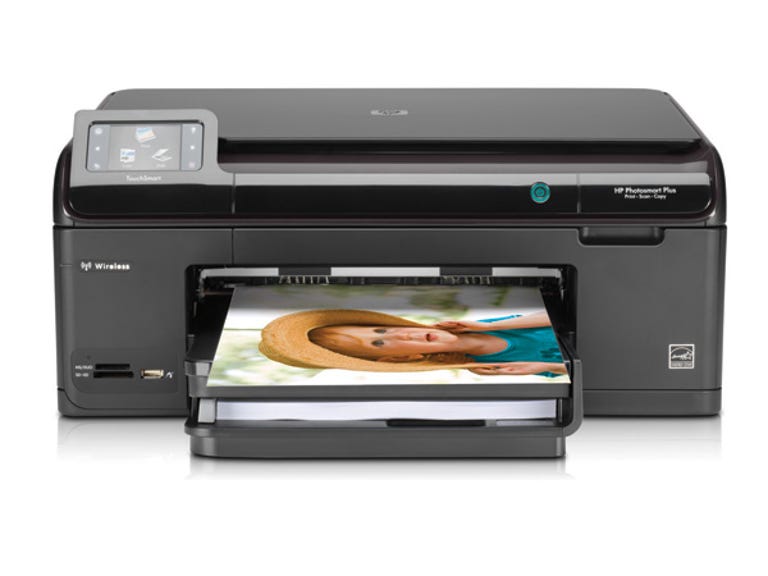 Why You Can Trust CNET
Why You Can Trust CNET HP Photosmart Plus B209 review: HP Photosmart Plus B209
The Photosmart Plus has a great touchscreen interface, but average printing quality at best.
Design
There's only so much that any vendor can do with a printer in design terms. They're all going to have to be boxy, more or less. The Photosmart Plus at least has a few curved edges on its all-black body, with a single dual purpose paper tray jutting out from the front. The top half of the tray is used for loading photo paper, while the lower half covers plain paper usage. To the left of that sits a 2.36-inch touchscreen control panel which, like the Lexmark's recent run of printers, is used to run all of the Photosmart Plus' printing duties.
The Good
The Bad
The Bottom Line
Features
HP rates the Photosmart Plus' print speeds as up to 30ppm in draft black, dropping to 15ppm in normal quality mode. Colour printing gets a 28/11ppm split between draft and normal modes. 10x15cm photo printing is quoted as printing "as fast as 16sec" on HP's specification page for the printer. Scan resolution is stated at up to 1200dpi.
The Photosmart plus uses four separate ink tanks (Cyan, Magenta, Yellow and Black) available in both normal and high capacity varieties. Connection is either via USB or 802.11b/g wireless network, and as usual with HP printers, a wide variety of additional printer applications will be installed on your system unless you specifically tell it not to.
Performance
Installation of the Photosmart Plus was a touch hit and miss. On an iMac running Snow Leopard, it ran smoothly and the wireless setup, which like many involves the temporary use of a USB cable went without a hitch. The same wasn't true on the Windows 7 side, where the Photosmart Plus detected without a hitch when connected via USB, but wirelessly ran into significant firewall issues with AVG Internet Security 9. Disabling the firewall fixed it, and it's arguably more of a fault on the firewall side, but at the same time dumping consumers with warning messages about UDP ports is perhaps a little unfriendly on HP's side.
Once we'd overcome that hurdle, we got to using the Photosmart Plus properly. On the plus side (no pun intended) the touchscreen panel works extremely well and is logically laid out. We could access any of the unit's functions with ease and without having to dig up product manuals at all.
Testing with document printing showed a surprising level of quality and speed for what's meant to be a photo printer. In normal coverage we generated a test sheet in twelve seconds and an average of eleven pages per minute. Switching over to draft printing modes saw speeds shoot up to ten seconds for the initial page and an impressive eighteen pages per minute print speed. There was a price to pay for printing in draft. Understandably text was a little softer, but the pure speed that the Photosmart Plus tried to push paper through at introduced a lot of shudder in the printer body. This translated to intermittent jagged printing that almost resembled italics on some characters. Light printer body shuddering is something of a fact of life in most inexpensive printers, but the Photosmart Plus has a rather bad case of it in draft mode.
Photo printing with the Photosmart Plus took an average of 25 seconds for a 10x15cm to come out. Colour fidelity was good, but we noticed a very distinct line pattern across all photos at a regular interval. No amount of cartridge cleaning, changing to different photo paper types or repositioning the printer changed this, and it gave facial shots a rather "identikit" look to them — not what we were looking for.
Conclusion
At the rough AU$200 price point there's fierce competition in the multi-function space, especially as last year's more expensive models drop down to that price point. We like the Photosmart Plus' simple touchscreen a lot, but it can't make up for what is ultimately sub-par printing quality.


